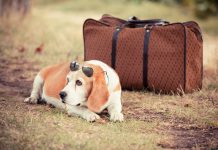This post may contain affiliate links. We may earn money or products from the highlighted keywords or companies or banners mentioned in this post.

Black box recordings suggest Tuesday’s Germanwings crash may have been deliberately caused by co-pilot Andreas Lubitz. Based on these voice recordings, prosecutors say Lubitz locked out captain Patrick Sonderheimer when he left the cockpit to use the restroom. With complete control of the Airbus A320, Lubitz, it is now thought, forced the plane into its dive toward the French Alps.
The crash has caused many international airlines to question cockpit protocol. Already, countries and airlines are adopting new policies, some of which the U.S. has mandated for years, including a rule that there must be two people in the cockpit at any one time.
“A qualified crew member [such as a relief pilot or flight attendant] must lock the door and remain on the flight deck until the pilot returns,” says Elizabeth Cory, who works for the Federal Aviation Administration.
European carriers, including Lufthansa (Germanwings’ parent company), often don't require two crew members on the flight deck, according to Richard Taylor of Europe’s Civil Aviation Authority. In the last day, however, many foreign carriers have implemented regulations similar to the FAA’s, including Air Canada and Norwegian Air Shuttle.
But there’s another question to be answered: to what extent are pilots screened, not only at the beginning of their careers, but throughout?
“Our pilots,” said Melanie Hinton of Airlines for America, “undergo rigorous evaluations in the hiring process…[and] regularly undergo thorough medical examinations to maintain their license.”
Lubitz, of course, passed through Lufthansa’s similarly intense screening procedures.
Drone-operated planes may not be an answer, but undoubtedly, the fate of Germanwings Flight 9525 will again have travel authorities seeking ways to make air travel more secure.










